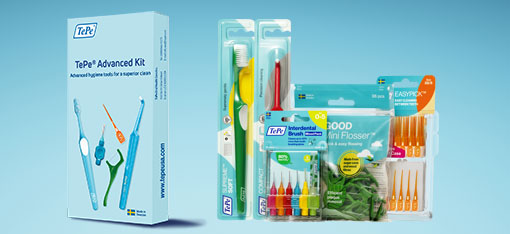TePe’s Commitment to Net Zero by 2050: A Sustainable Future
TePe, a global leader in oral hygiene products, has set an ambitious goal to achieve net-zero emissions across its value chain by 2050.
Mapping Greenhouse Gas Emissions
In 2024, TePe conducted a comprehensive greenhouse gas (GHG) inventory following the GHG Protocol standards in collaboration with IVL Swedish Environmental Research Institute. This inventory confirmed the areas with high emissions identified in previous lifecycle assessments, particularly from products and transportation. The mapping process has enabled TePe to set ambitious goals and targets aligned with science-based methods.
Key Actions Towards Net Zero
TePe has implemented several key actions to reduce their carbon footprint and move towards net-zero emissions:
- Transition to Renewable Resources: TePe has committed to phasing out virgin fossil materials. In 2024, 85% of the plastics purchased for their products came from renewable sources. All toothbrush and interdental brush handles are made using materials from renewable sources or certified renewable mass-balanced materials.
- Energy Efficiency and Renewable Energy: TePe continues to use 100% renewable electricity in their production facility in Malmö, with their solar plant contributing 10% of the energy. They have also installed technical solutions at over 100 measuring points to analyze and optimize energy consumption.
- Reducing Transportation Emissions: By transitioning from air freight to sea freight, TePe has achieved a 26% decrease in emissions from transportation.
- Sustainable Packaging: TePe aims to have 100% of their self-produced product packaging containing at least 60% renewable, recycled, or fully FSC-certified materials by 2025. In 2024, they reached 98% of this target.

Long-term Goals and Targets
TePe's long-term sustainability goals are ambitious and comprehensive:
- Net-Zero Emissions by 2050: TePe commits to reducing absolute scope 1 and 2 GHG emissions by 90% by 2050 from a 2019 base year. They also aim to reduce scope 3 GHG emissions from purchased goods, upstream transportation, and end-of-life treatment of sold products by 90% by 2050.
- Phase-Out of Virgin Fossil Raw Materials: By 2030, TePe aims to have 100% of the handles of their products made with non-virgin fossil plastics. They also plan to phase out fossil electricity by 2030.
- Zero Waste to Landfill: TePe is committed to achieving zero waste to landfill and reducing manufacturing waste to energy recovery by 2030. In 2024, they successfully recycled 79% of waste generated at their production facilities.
Conclusion
TePe's commitment to achieving net-zero emissions by 2050 is a testament to their dedication to sustainability and environmental responsibility. Through innovative solutions, resource-efficient practices, and a focus on renewable resources, TePe is paving the way for a sustainable future. Their journey towards net-zero emissions is not just a goal but a continuous effort to make a positive impact on the world.
By setting ambitious targets and taking concrete actions, TePe is leading the way in the oral hygiene industry and demonstrating that sustainability and business success can go hand in hand. As they continue on this path, TePe's commitment to net-zero emissions will inspire others to join the movement towards a more sustainable and healthier planet.
Read More: TePe's Sustainability Initiative for A Better World











Leave a comment